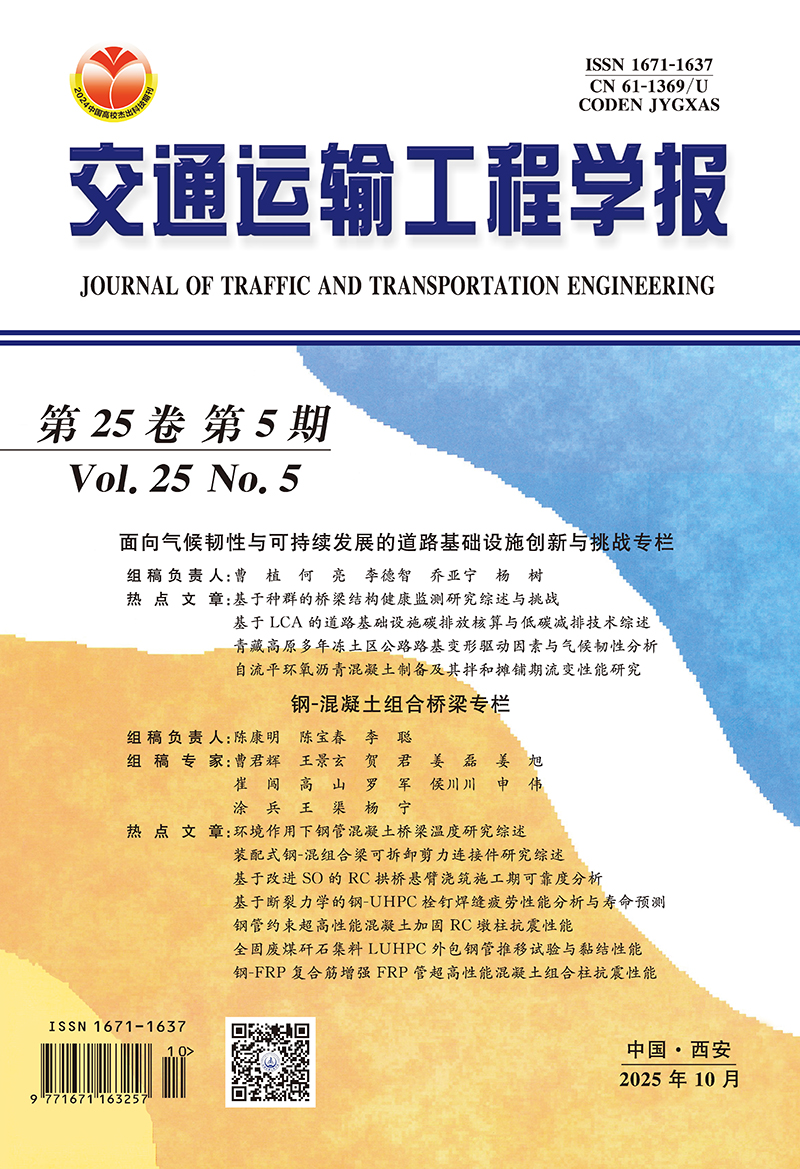2024 Vol. 24, No. 3
Display Method:
Flexural capacity of steel reinforced ultra-high performance concrete beams with rectangular section
Abstract:
2024, 24(3): 94-109.
doi: 10.19818/j.cnki.1671-1637.2024.03.006
Adhesion/cohesion failure behavior of porous asphalt concrete considering mortar random distribution
Abstract:
2024, 24(3): 139-153.
doi: 10.19818/j.cnki.1671-1637.2024.03.009





